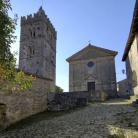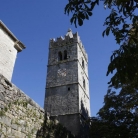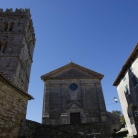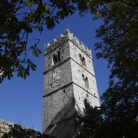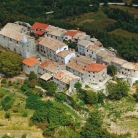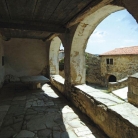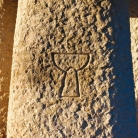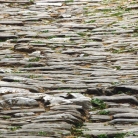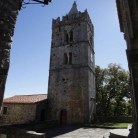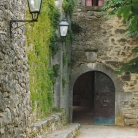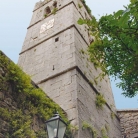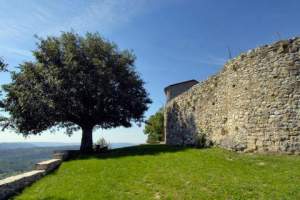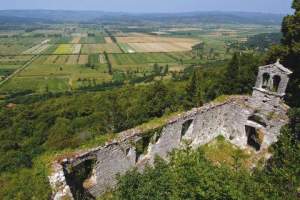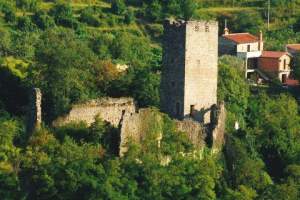The castle
Medieval Hum is known as the smallest town in the world. It was first mentioned in 1102 in the deed of gift by Marquis Ulrich II.
Every visitor is welcomed to this medieval hilltop town above the spring of the Mirna river as it says on the main town gate inscription: 'come and visit this little town, the warmth radiates from its hard stone'. The passage through the early 12th century double entrance gates, and then this one from 1562 leads us into the square of the smallest town in the world, Hum. The exceptionally small area has all town features: the town loggia, nobility and folk houses, and the parish church with the priest residence. Castelum Cholm was first mentioned in 1102 in the deed of gift by the Istrian Marquis Ulrich II giving Hum (as well as a number of other estates) to the Patriarch of Aquileia as the feudal estate.
The castle was located on the site of the current Church of the Assumption of the Blessed Virgin Mary (erected in 1802) on the highest point of the town, which allowed its control of the surrounding area. Rectangular in shape, 30 x 35 meters (typical dimensions of the time) and connected by two streets with the twin town gates, which facilitated better communication and protection. The castle was entered from the inside, from the town. Despite its basic defensive purpose, in the earlier era it was a seat of its owners – the feudal lords under the Patriarch of Aquileia.
Ever since the prehistoric times until the ruins of the Venetians in 1797, Hum was a defensive border town, full of life, conflicts, different rulers, war and peace. From the antiquity to the Late Middle Ages, it was used as a defensive castle of an estate. Often destroyed and renovated, it finally fell under the Venetian rule in 1412, which restored it completely to defend its own borders. Its most probable final fall occurred during the Uskok War (1612-1618), when the entire town was burned down and the castle was never renovated. Its stone was gradually being taken for building houses. Any trace of it was finally lost following the erection of the church.
How to get there:
From Rijeka by road through the Učka tunnel to Roč, and then turn left and take a narrower road to Hum. You can take a train from Pula to station Hum, and then walk. The possibility of driving along the Pazin-Cerovlje-Buzet-Roč-Hum road. Go via Buzet for
Note:
You must visit the Glagolitic Alley and the Prefect Table.
T: +385 (0)52 662 343
tzg-buzeta@pu.t-com.hr
www.tz-buzet.hr












